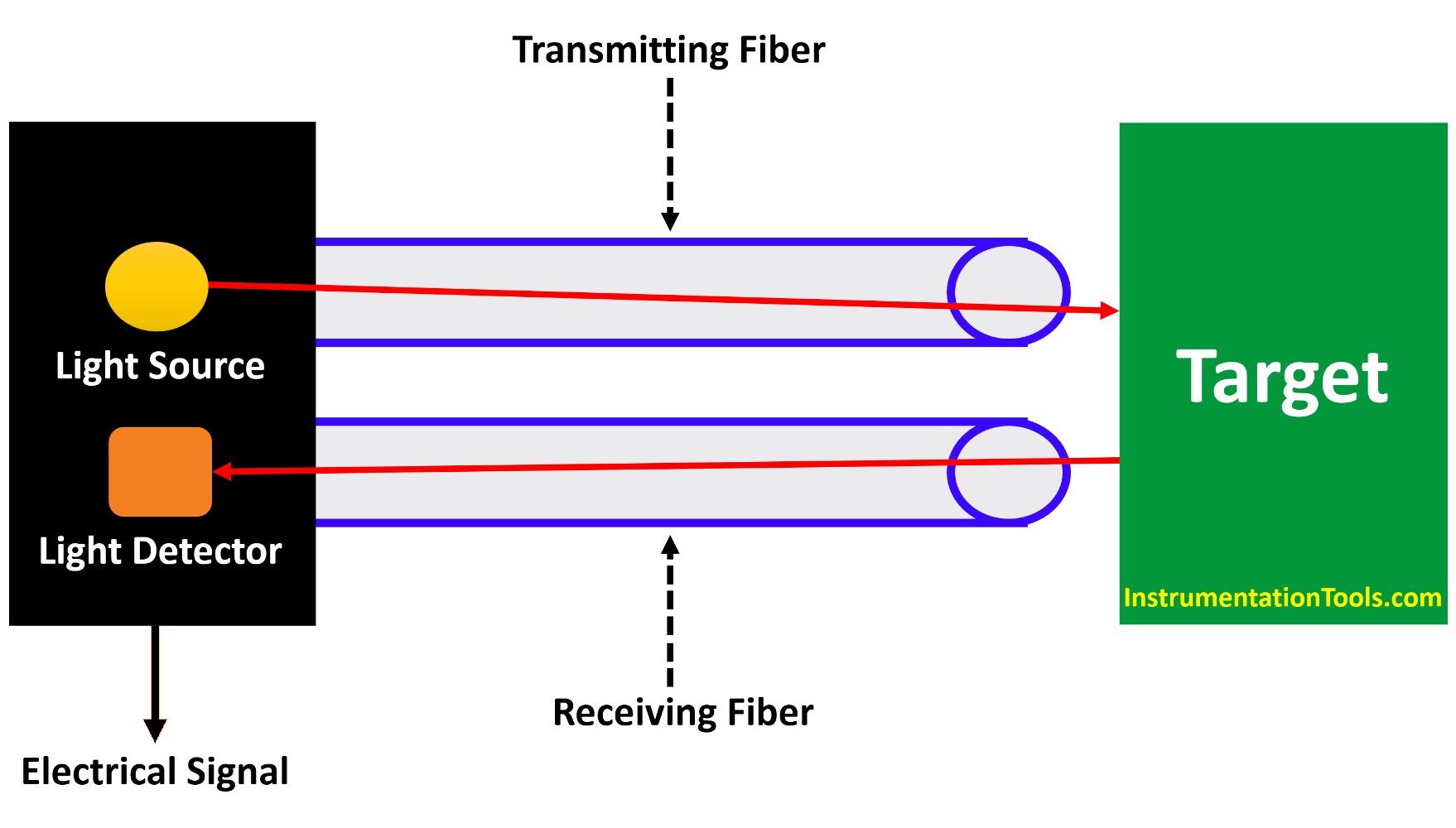A fotonic sensor is used for the measurement of position, displacement, and vibration. The fotonic sensor sends a beam of light through a fiber-optic probe.
The light hits the target surface and returns back. The received light has a change in intensity which is converted to an electrical signal.
This electrical signal Is proportional to the distance between the probe tip and the target surface. Fotonic sensor is a type of non-contact type position, displacement, and vibration measurement sensor.
Fotonic sensor uses advanced optical fiber and an electronics circuit for the precise measurement of position, displacement, and vibration.
Fotonic sensors work for almost all surfaces like metallic, plastic, ceramic, glass, or liquid.

The construction of fotonic sensor consists of a light source for generating light, transmitting fiber for transmission of light to the target surface, and receiving fiber for guiding reflected light back to the light detector which detects the intensity of reflected light from the target surface.
PLC ladder logic design to control 3 motors with toggle switch and explain the program…
VFD simulator download: Master the online tool from the Yaskawa V1000 & programming software for…
The conveyor sorting machine is widely used in the packing industries using the PLC program…
Learn the example of flip-flop PLC program for lamps application using the ladder logic to…
In this article, you will learn the STAR DELTA programming using PLC controller to start…
Lube oil consoles of rotary equipment packages in industrial process plants are usually equipped with…